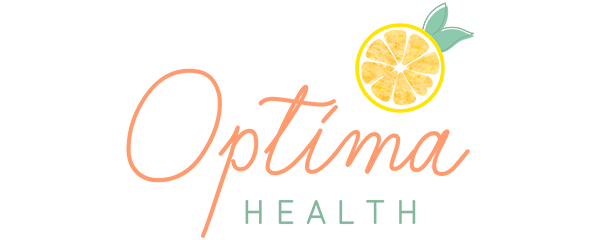Food labels can often be likened to looking at an algebraic equation…you know what you’re looking for, you know the variables, but you don’t really know what the answer is, you don’t really know if what you’re reading translates to a ‘healthy’ food option or not?
While food labels don’t lie, they can be deceptive and overly difficult to understand!
So, lets break it down.
Step 1: Check how many servings the food claims to have.
Use this section to measure whether this food product is an appropriate option for you.
Often what we consider to be one serve, is more than one serve. A classic example is cereal. One serve of muesli is generally 30g or ¼ cup. If it were me, this simply is not going to cut it and I would find that soon enough I have triple the amount in a bowl.
Many food companies use the nutrition label of the product to make it look like a healthier option. Obviously a smaller serve will have less sugar, less salt, less fat, less overall energy etc… but we are not left satiated.
Best tip: When comparing food products, always refer to the ‘per 100g’ column of the nutrition label as it provides a clearer picture of the product’s nutrition.
When choosing packaged foods, look in the per 100g column of the food label and aim for:
| Per 100g | Healthy Choice | Sometimes Choice |
| Total Fat | Less than 3g | 3-10g |
| Saturated Fat | Less than 1.5g | 1.5-3g |
| Sugar | Less than 5g | 5-10g |
| Sodium | Less than 120mg | 120-400mg |
| Fibre | More than 3g | |
Step 2: Check for nutrition claims.
No added sugar: Just because no sugar is added, doesn’t mean that the prodyct is free from sugar all together. A common culprit is juice, which can often be a mix of both natural and refined sugars. For example, one regular glass of apple juice supplies you with your recommended daily intake of sugar (i.e. 6 teaspoons) and limited fibre. Remember sugar has around 60 names, it is hidden where we least expect it. Check out previous blog posts for more information.
Gluten free: Just because a product is gluten free, doesn’t mean it’s necessarily healthier for us. Often these commercial products use poor quality refined flours, stripped of nutrients and are poor in fibre. This is not to say that all ‘gluten free’ products are terrible, rather do your research prior to purchasing.
Source of fibre: Unfortunately, any product that has even 1g of fibre, can be labeled as a source of fibre. Always aim for at least 3g fibre per 100g of the food product.
Reduced salt: While products labeled with this nutrition claim generally have 25% less salt, than the standard product, they can still be quite high in overall sodium. Always aim for less than 120mg sodium per 100g of the food product.
‘Diet’: Nearly always means an artificial sweetener is at play!
97% fat free: This generally means less than 3g of fat per 100g of the food product. These products often have a higher sugar content to make the food more palatable after the removal of fat.
Cholesterol free: This generally means less than 3mg of cholesterol per 100g of the food product. Be wary though, this does not mean ‘low fat’. Cholesterol is in animal-based products, therefore, while a vegetable oil such as canola oil can be 100% cholesterol free, it is still a very high source of fat.
‘Light’ or ‘lite’: This does not always mean lower in energy. It can often mean lighter in colour or texture or weight; having less salt, tasting lighter. Take this one with a pinch of salt.
Reduced fat: While products labeled with this nutrition claim generally have 25% less fat, than the standard product, they can still be quite high in overall fat. Always aim for less than 3g fat per 100g of the food product.
Best tip: If a product has a nutrition claim, such as those examples above, always refer to the Nutrition Information Panel for further clarification as to whether the product is a healthy choice or not.

Step 3: Read the list of ingredients.
All of the ingredients of a food product need to be listed on its labeling. Ingredients are listed in descending order by weight. In other words, the first ingredient in the list accounts for the largest component of the food product whilst the last accounts for the smallest.
You can generally tell how nutritious a food is by what is in the first 3-5 ingredients. If a source of fat, sugar or salt, occur in the first few ingredients, the food will contain a large amount of these ingredients and is likely not a healthy choice.
These days companies are getting sneakier with their labeling and are using other words to disguise the common names for fat, salt and sugar.
Here are some examples to watch out for:
| Fat | Salt | Sugar |
| Milk solids
Butter Margarine Palm oil Monoglycerides Vegetable oil (e.g. canola, sunflower, coconut) Cocoa butter Beef fat Cream Shortening Dripping |
Stock cubes
Sea salt Sodium bicarbonate Sodium Sodium nitrate/nitrite MSG Baking powder Yeast extract |
Corn syrup
Dextrose Glucose Honey Rice malt syrup Cane sugar Brown sugar Sorbitol Mannitol Fruit juice concentrate Barley malt Golden syrup |
Best tip: Print a list such as this one above off and carry with you when you go to the shops. Read your labels and if there is more than one of the above words in the first 1-5 ingredients, chances are the product is not the healthiest option.

2Pingbacks & Trackbacks on How to decode a food label and its nutrition claim/s?